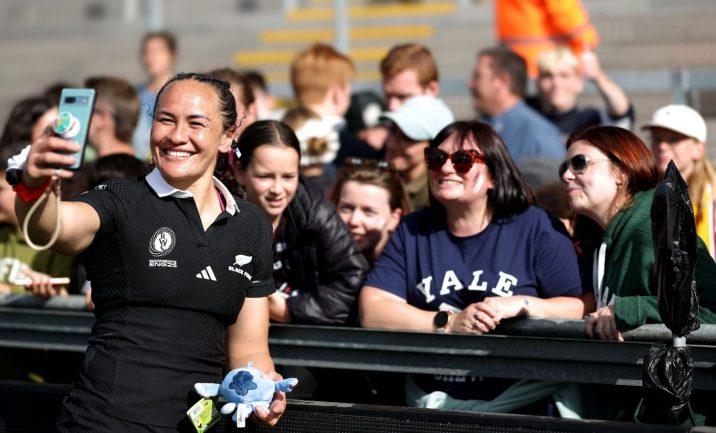Legacy
This is the fashionable word without which no major sporting event can look the world in the face. In everyday language it means ‘follow-up’.
England learned hard lessons after a rare World Cup win in 2003. The RFU didn’t ensure it built on the feel-good factor.
It didn’t repeat the lapse this time. The moment the final curtain came down various initiatives were launched: long-term to “power women’s and girls’ rugby to 2030”; short-term a ‘Love Rugby Showcase’, a Rugbyfest (where clubs up and down the country opened their doors to a variety of events) and a Champions Party at Battersea Power Station.
Far more important were plans put in place for less well funded nations.
World Rugby announced a new version of WXV, now termed ‘WXV Global Series’.
It ensures that the top 12 nations will enjoy more regular fixtures. Fine, especially for such teams as Australia, Canada, New Zealand and USA. My concern is for the next in ranking order: Brazil, Fiji, *Hong Kong, *China, *Netherlands, Samoa and Spain. (* did not qualify for RWC 2025).
The top six will meet at an unspecified location. Will attendances be any higher than in the two previous iterations? And the programme lasts from 2026 to 2028, which means that other ambitious nations will be left out in the cold while the favoured sextet can advance mightily. I keep recalling the fate of Colombia: here today, gone tomorrow.
One of the biggest bonuses of the latest RWC was the increase in fanbase of players, who went out of their way to mingle, especially with the young.
Building foundations
This brings practical problems. How do unions cater for the hoped-for increase in playing numbers? They need clubs, established or newly formed, coaches with the right qualifications and support facilities. They do not grow on trees.
France has a stated strategy of increasing player numbers from 48,000 to 100,000 by 2033. The game is sufficiently well established there for that target to be reached; not so elsewhere.
PWR
Even this pounding heart of women’s rugby has its challenges. The board issued a totally optimistic view of the coming season. The increased TV coverage is a huge plus, but other issues I’ve mentioned before remain unresolved, professionalisation at their head.
Longing for leagues
A thriving national league is a vital element; there are few enough of those at present. One ambitious example is the American WER. A few Eagles who have played in the PWR (Alivia Leatherman and Keia Mae Sagapolu for example), have returned home to join in. We must hope the enterprise goes from strength to strength.
France’s Elite 1 has acquired a sponsor, AXA. Excellent. But far more important is the growth of leagues in other nations, meaning that ambitious players no longer feel it necessary to move to English or French clubs. Italy and Spain come to mind. The arrival of three prominent Black Ferns in the PWR is a sign of the times.
Rivalries
Each nation has its own favourite sports. In many of them rugby union has to fight hard to gain a footing. Australia is a prime example, where Rugby League is a strong competitor. Rugby Australia faces a double challenge with a men’s RWC coming in 2027, followed by the women’s version two years later.
New Zealand also has to fight off the financial power of RL.
Sevens
Then comes the awkward relationship with Sevens. In the run-up to the 10th RWC we were offered an outline of the coming SVNS Series. So WR is keeping both its eggs in one basket.
Many of the 16 nations competing in England had included 7s players in their training squads, but only a chosen few were retained when the final squads of 32 were announced. Several of them made a massive impact, Jorja Miller to name but one (or three?).
Since then both New Zealand and USA have set up new programmes for 7s squads. It would be fascinating to know precisely how NZ sees this Janus-like existence. Allan Bunting went ao far as to say his team had let the nation down (when they lost to Canada). Only Kiwis could say something like that, but local critics doubt whether the All Blacks and the Black Ferns can afford to retain both formats and expect to walk off with Olympic gold medals and world cups.
Much will change over the coming four years. Three head coaches have announced their retirement from post, Jo Yapp, Bryan Easson and Sione Fukofuka. There have even some announcements of player retirements, not very many as yet, though more may well follow later.
The biggest secrets will be the post-tournament reviews. Will any heads fall? It’s perfectly possible.
But while change is inevitable, we can look back on the most successful RWC ever. Indeed, the records it has established make a repeat well-nigh impossible.
We managed to avoid another England-New Zealand final, but can rugby forunes shift sufficiently for two quite different nations to dispute a coming final? Brazil v Fiji would be huge fun.
Not within four years, I fear.









